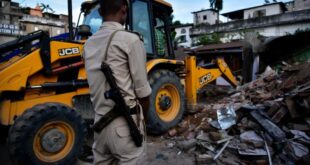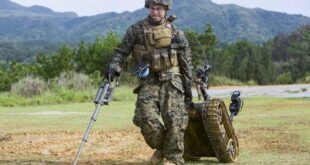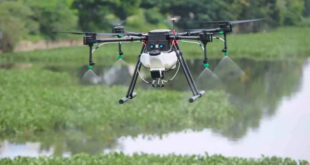With technology advancement in the drone industry and drone access expanding from military to commercial use, rope access specialists Skyriders found that drones could be successfully used in the inspection of boilers and other confined spaces.
“Industries are constantly developing, and the inspection and maintenance industry is no exception. “We found that we need to develop with technology that will allow for ease of inspection. “Starting with scaffolding and rope access, the next technological stage of advancement in this field was using drones for inspection,” says Skyriders marketing manager Mike Zinn.
He mentions that special indoor or confined space drones have a number of benefits when used to inspect boilers or confined spaces. These drones do not need a global positioning system to fly and manoeuvre, it can function in small spaces and it has good battery life when in use.
Zinn adds that drones have good lighting and high-resolution imaging technology that can take accurate images of the environment within a boiler. They are also cost effective because scaffolding does not need to be erected for the inspection.
Skyriders has been conducting visual inspections using drones in boilers, petrochemicals storage tanks, ducting, vacuum furnaces and other confined areas since acquiring its first drone in 2016.
Zinn mentions that drones have presented an opportunity for Skyriders to offer a one-stop shop, whereby “we can carry out visual inspection with drones and any further inspections, such as ultrasonic wall thickness and the resultant maintenance, through rope access”.
Prior to using drones, there was an equal split between the use of scaffolding and rope access to carry out boiler inspection, with rope access slowly beginning to overtake the use of scaffolding, he notes.
Zinn says the introduction of drones has resulted in their quickly becoming the primary means of inspection in confined spaces.
However, “while drones are great in terms of capturing high-definition and thermal imaging, it is limited to visual inspections”, he says.
While many inspections are visual, there are some cases in which further testing, such as non-destructive testing (NDT) or ultrasonic wall thickness, is required. Drones are currently unable to carry out these tests.
“While the possibility of the advancement in drone technology is imminent, it is unlikely that drones carrying out NDT will be available in the near future. For now, the combination and synergy of drone technology and rope access is guaranteed to save clients time and money.”
The combination of these two methods can provide a holistic approach for maintenance and inspections, enabling the clients to make the best decision for their business, adds Zinn.
Using drone technology and rope access has enabled Skyriders to further expand into projects in the power generation, petrochemicals and paper and pulp industries.
 Unmanned Aerial Vehicle The latest drone news
Unmanned Aerial Vehicle The latest drone news



